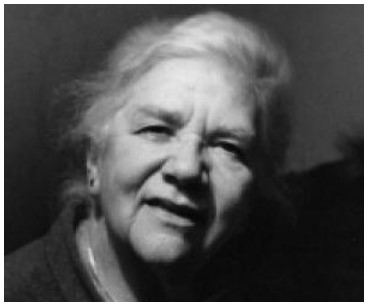THERAPEUTIC MODEL DEVELOPMENT: A LONG HISTORY AND INTERNATIONAL RESEARCH - PATRICK TOMLINSON (2021)
Date added: 26/10/21
Download a Free PDF of this Article
Introduction A therapeutic model is in effect a method of working with human suffering, intending to achieve improvements. Though the language is new, the idea is not. In work with children and young people, models have certainly existed throughout the 20th century. They tended to be created by pioneers, who researched, implemented, and passed them on. This was often done by creating a centre, institution, and/or a therapeutic community that embodied the model. Sometimes, even when excellent outcomes seemed to be achieved, people outside of these centres understood little about the practice. Critics have referred to an air of mysticism. Although, pioneers such as Bruno Bettleheim and Homer Lane in the USA, Barbara Dockar-Drysdale, George Lyward, Homer Lane, A.S. Neill in England, August Aichorn in Austria, and John Brown in Canada among others, did write substantially about their work, ideas, and methods.
One of the main differences these days is a growing expectation for a model to be clearly articulated in a written document. This makes it potentially more accessible. It also means that it can be more easily critiqued and challenged. Following on from that there is an expectation that a model should be informed by research and evidence. Well-articulated models include the following models among others – Sanctuary, Children and Residential Experiences (CARE), ARC (Attachment, Self-regulation, and Competency), USA; Model of Attachment Practice (MAP), Canada; The Lighthouse Model, Australia; SACCS Recovery Programme, UK; Resilience Model, Northern Ireland; Livramento Model of Therapeutic Intervention, Portugal.
Naturally, there is great interest in the subject of therapeutic models and the outcomes they achieve. Two of the key reasons for this interest are the serious level of the problems the models are designed to treat, and the huge costs in economic and human terms. The service users are often people with histories of severe trauma and other adversities. Complex trauma is a common feature. Therefore, an effective intervention usually must consider all aspects of a person’s or family’s life and functioning. In the case of therapeutic residential and foster care, the intervention is 24/7.
The Essence of a Therapeutic Model
There are key requirements for all therapeutic models,
1. To understand the needs of the service users.
2. To be clear about the methods/interventions that will be used to meet those needs.
3. To have evidence that these methods/interventions are effective and matched to the needs.
4. To have a reliable way of assessing whether positive outcomes are being achieved.
These principles can be applied to any therapeutic work, from individual to organizational interventions. They can also be applied as a model for many enterprises in other fields. A fully articulated model makes it clear in detail – the rationale of the model and how it works. Where people have relatively straightforward problems, for example, where individual therapy might be effective, the model may also be relatively simple. As a result, its effectiveness may also be relatively easy to measure. Where the problems and interventions are complex, the model will also be more complex. Where an intervention is 24/7, such as in therapeutic residential care, there are many levels to consider. For instance,
1. The direct work with children and young people, and their families.
2. Leadership and management processes in the organization.
3. The culture of the setting.
4. Relationships across the boundary of the organization. For example, with social workers.
How all of these are carried out will have an impact on the service users and influence the outcomes achieved. Once a model is created (the process of how this is done is essential) the following need to be in place.
1. Training so that everyone understands the model and how to carry out their role in line with it.
2. Assessment to identify service user needs, which can be built into their therapeutic plans.
3. Review and monitor all policies and procedures to ensure they are aligned with the model.
4. Evaluation of overall model effectiveness, ongoing research, and continuous improvement.
I was fortunate to begin my career in 1985 at the Cotswold Community, a Therapeutic Community for boys in England. The Community had been set up by the Government in 1967 as an experiment and alternative to the approved school system. The approved schools had very poor outcomes, so from the beginning, the Cotswold Community was designed to be a very different approach. There was great foresight from the beginning in realizing that not only was a therapeutic approach needed in the work with the children, but a management system that would support this was also essential. Barbara Dockar-Drysdale became the Consultant Child Psychotherapist and The Tavistock Institute of Human Relations provided leadership and Management Consultancy, via A.K. Rice, followed by Isabel Menzies Lyth and Eric Miller.
The Community developed an excellent therapeutic model for its work with the children and a systemic approach to its management and leadership. And the two aspects were very well integrated. By the time I began work, most of the key elements of the model were in place. One of the consultants who wrote about the community’s work, Isabel Menzies Lyth (1979, p.230) explained why it is necessary to have an explicit model,
 “Very frequently it seems, the explicit or implicit model for operating units is some version of the family, which may be inappropriate. It denies the reality that this is a work situation which needs management with clarification of roles, responsibilities and relationships. Further, the so-called family model often denies the reality of the family. A well-functioning ordinary family is likely to have a complicated and effective management system even though it would not be described in those terms and is often not noticed because it is implicit and stable over long periods. In institutions the same effect can only be achieved by making explicit the managerial functions and relationships.”
“Very frequently it seems, the explicit or implicit model for operating units is some version of the family, which may be inappropriate. It denies the reality that this is a work situation which needs management with clarification of roles, responsibilities and relationships. Further, the so-called family model often denies the reality of the family. A well-functioning ordinary family is likely to have a complicated and effective management system even though it would not be described in those terms and is often not noticed because it is implicit and stable over long periods. In institutions the same effect can only be achieved by making explicit the managerial functions and relationships.”
While all aspects of the Community’s work were clear and there was extensive writing (internal documents, published articles and books) capturing different parts of the approach, it was not fully joined up in a manner that would be considered today as a fully articulated model. It was close to it, and it would not have taken too much work to do that.
In the years since then, many organizations began to provide what would be termed therapeutic services, but sometimes without great clarity about exactly what was therapeutic. What distinguishes a therapeutic service? At the same time some research, such as Clough et al. 2006, claimed that having a clearly defined therapeutic model was a key factor in achieving positive outcomes for service users. So, for various reasons, from 2000 onwards, it became a growing expectation that therapeutic services for children would have a clearly articulated model. Some organizations such as SACCS in England, and Lighthouse Foundation, in Australia, defined their models in detail and published books on them. At the same time, other organizations created models that could be adopted and licensed to therapeutic care providers.
International Research
During the last two decades, there has been significant research across the world looking at therapeutic models, attempting to identify what works in residential care. While measuring outcomes for young people I not too complicated, correlating them with whole models or aspects of a model is extremely difficult. As every part of the 24/7 context has an influence, it is especially difficult to know, for example, whether a young person’s progress, is related to a specific therapeutic intervention, the quality of a specific relationship, the organization culture, and/or the quality of leadership and management. I have compiled some key points from various international meta-studies. I think the findings are very interesting helpful. These are the headings I cover with a few brief key points,
• International Meta Studies
Three significant studies with links to free PDFs.
• Definition of Therapeutic Residential Care
• Key Findings
Having a model is important. Residential Care is an important part of the care continuum. Family involvement is vital as is cultural sensitivity.
• Home-Grown Models
Developing home-grown models emerges favourably from the research.
• Benefits of Developing your own Model
Creativity, Ownership, Integration, Learning from Experience, and Cultural Sensitivity.
• An Overarching Framework
The research finds that an overarching framework based upon universal principles is most likely to be effective.
• 5 Key Principles
1. Do no harm – Safety First 2. Partnership with families 3. Anchored in communities, culture, and web of social relationships 4. Learning through living in the context of deeply personal, human relationships
5. Use evidence-based models with effective strategies for practice. Clear in procedures, structures, and protocols. • Other Important Elements
Tailored to children’s needs; The living environment is a vital component; Positive peer culture; The importance of training.
• A Theory of Change
A therapeutic model is a theory of change and creating a model is a change process. Therefore, as well as the writing of the model attention must be paid to the change process, for the whole organization and the key project leaders. The organization, teams, and individuals must develop and evolve as part of the model creation process.
• Treatment Fidelity
The effective implementation of a model is critical to its success. An excellent model on paper but not implemented well, will not achieve positive outcomes. Implementation is stage 2 of the model process – 1. Creation 2. Implementation 3. Establishment.
• Manualization Benefits
The concept of a manual can be unhelpful if it leads to a prescriptive, non-thinking approach. But it is necessary to clarify the details of the model, the underlying ethos, and how various tasks are carried out. A manual is also important for the dissemination of the model, training, and evaluation.
• Outcomes and Evaluation
Service user outcomes must be regularly assessed and reviewed. The model should be continuously evaluated with new research and evidence considered. Without evaluation, there is no evidence-based practice.
• Readiness for Model Development
Before beginning model work it is important to evaluate the organizations level of readiness and to identify strengths as well as potential challenges and obstacles.
• References
40 references, many with links to articles and PDFs.
Reference
Menzies Lyth, I. (1979) Staff Support Systems: Task and Anti-task in Adolescent Institutions, in Containing Anxiety in Institutions: Selected Essays Vol. 1, London: Free Association Books (1988)
https://www.johnwhitwell.co.uk/child-care-general-archive/task-and-anti-task-in-adolescent-institutions/
Files
- Download a Free PDF of this Article
- Download a Free PDF of International Research on Therapeutic Models PowerPoint + Resources
Please leave a comment
Next Steps - If you have a question please use the button below. If you would like to find out more
or discuss a particular requirement with Patrick, please book a free exploratory meeting
Ask a question or
Book a free meeting














